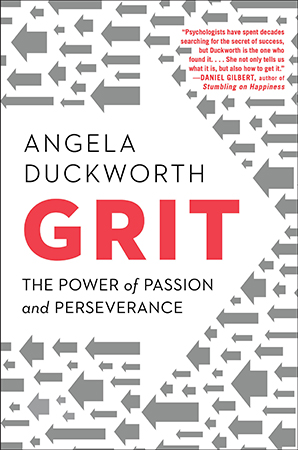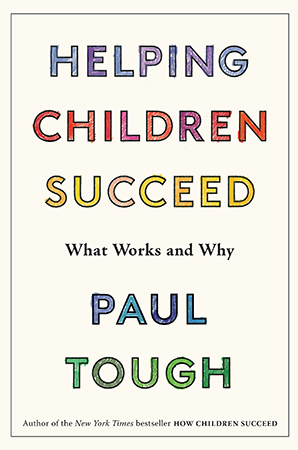 Grit: The Power of Passion and Perseverance
Grit: The Power of Passion and Perseverance
by Angela Duckworth
Scribner, 2016, $28, 352 pages
Helping Children Succeed: What Works and Why
by Paul Tough
Houghton Mifflin Harcourt, 2016, $18.99, 144 pages
As reviewed by Jay P. Greene
Education reform has fallen prey to one ill-conceived fad after another. Whether the trend du jour is tearing down classroom walls, adopting whole language reading, or pursuing “21st-century skills” such as creative thinking and collaborating, we eagerly latch on to reform after reform with little skepticism and before the effectiveness of a new approach has been tested by research.
This historical pattern has made people understandably wary of all the recent excitement about noncognitive or character skills, like grit, emotion regulation ability, and growth mindset. This new attention to character skills has many of the markings of previous failed fads. Key school leaders are embracing the importance of character skills before we’ve even clearly defined the concepts, let alone how they could be measured. And a variety of vendors are hawking character-skill curricula and pedagogical practices before they have been validated by rigorous research. In short, school and educator practice with respect to character skills is running far ahead of knowledge.
 When I picked up Grit by Angela Duckworth and Helping Children Succeed by Paul Tough, I was afraid these two volumes would simply be written so as to provide fuel for the noncog fad. Instead, I was impressed by the extent to which both books attempt to popularize the importance of character skills while keeping the reader firmly grounded in what we actually know and don’t know about the topic from research.
When I picked up Grit by Angela Duckworth and Helping Children Succeed by Paul Tough, I was afraid these two volumes would simply be written so as to provide fuel for the noncog fad. Instead, I was impressed by the extent to which both books attempt to popularize the importance of character skills while keeping the reader firmly grounded in what we actually know and don’t know about the topic from research.
Angela Duckworth is a professor of psychology at the University of Pennsylvania and recipient of a 2013 MacArthur “genius” award for her work on grit. While she has published extensively in scholarly journals, her new book reads more like a self-help volume than an academic one. It is filled with inspirational examples of famous people whose passion and perseverance have helped them accomplish great things in a variety of endeavors, from sports to art to science.
Importantly, Duckworth does not present these anecdotes as proof that grit is an essential character trait for success. Though she uses stories to illustrate her points, she also makes reference to rigorous research, including some of her own.
She makes a persuasive case that “talent” and intelligence alone cannot fully account for how and why people succeed. Passion and perseverance, which together make up grit, are also critical elements. Duckworth’s proof lies in research showing that her measure of grit is predictive of accomplishments, such as thriving at West Point or advancing in the National Spelling Bee. The book would have benefited if she had gone further in acknowledging the limitations of her measure of grit, as she has done in other publications, but in general her claims and anecdotes stick pretty closely to the evidence, which is fully documented with citations.
In the latter half of the book, when she shifts toward how grit might actually be taught, she notes:
Before I say more, let me repeat the caveat that, as a scientist, I’d like to collect more data points before coming to firm conclusions. In a decade, I should know a lot more about parenting for grit than I do now. But because there’s no pause button for parenting the people you care about, I’ll go ahead and tell you my hunches.
By citing evidence when she has it and cautioning us when she doesn’t, Duckworth sets an example that would be well heeded by other authors of popular books about social science.
Helping Children Succeed by journalist Paul Tough is the follow-up to his bestseller, How Children Succeed. In the earlier book, Tough popularized work by Duckworth and others on the importance of character skills. In this short volume, he tries to explain how policymakers and educators might improve those skills.
Tough is a journalist with a strong command of research on the topic, and his book feels more like a work of social science than does Duckworth’s. He rarely illustrates his points with colorful anecdotes or inspirational stories of success. Instead, he tries to describe research on the building blocks of character skills, all the way from early brain development to later disciplinary problems in schools.
His credibility would be enhanced if he avoided such broad declarations as “the science tells us” or “according to neuroscientists,” and the absence of citations in the book is a major shortcoming. But overall, Tough backs up his claims with accurate descriptions of rigorous research.
Tough argues that children raised in adversity are exposed to environments that induce “toxic stress.” As a result, these youngsters develop overly strong “fight or flight” reactions that undermine engagement, compliance, and motivation in the classroom years later. The solution, he suggests, does not lie in explicitly teaching children character skills: you can’t teach character the way you teach math or reading. Rather, Tough espouses changing the school environment in a way that undoes the effects of earlier toxic stress. In particular, he supports the approach articulated by researchers Edward Deci and Richard Ryan:
Classroom contexts where students experience autonomy, competence, and relatedness tend not only to foster more intrinsic motivation, but also more willing engagement in less interesting academic activities.
I’m not fully convinced that Tough has connected all the dots between early brain development and an effective method of conveying character skills. I tend to be skeptical of claims about educational practice that are based on neuroscience, given how difficult it is to observe brain development directly and how little we understand about the underlying processes. But Tough makes a compelling enough case that it should help inform policymakers and practitioners as well as generate additional hypotheses for researchers.
He’s almost certainly right that character skills are shaped by a child’s social context and modeling rather than by direct instruction. And he’s probably right that helping students feel authentic connections to the adults in their school and what those adults are trying to accomplish is incredibly important. Thinking about schools as social organizations, as James Coleman once did, will likely prove a much better approach to addressing problems of motivation than pursuing solutions that focus on using incentives or information to change outcomes. Students do not lack rewards for caring about succeeding in school or information about those rewards, since almost everyone knows that students who do better and go further in their education tend to make a lot more money. What they do lack, too often, is a connection with adults who would be disappointed if students didn’t care and strive for better outcomes.
Neither book fully solves the riddle of how schools might improve character skills, but they both take a solid first step in that direction. Both authors suggest that students need to feel supported and connected. Duckworth leans toward setting high goals that stretch one’s ability, while Tough supports goals that are not so high as to undermine a sense of competency. The truth is, neither one can say with confidence based on rigorous research exactly what strategies best convey character skills. But the authors’ latest books should advance popular understanding of these complex issues without fueling an irresponsible fad or reckless changes. That alone makes these books valuable reading for educators, policymakers, and scholars.
Jay P. Greene is Distinguished Professor of Education Policy in the College of Education and Health Professions at the University of Arkansas.
This article appeared in the Fall 2016 issue of Education Next. Suggested citation format:
Greene, J.P. (2016). Teaching Character: Grit is critical to how and why people succeed. Education Next, 16(4), 77-78.


